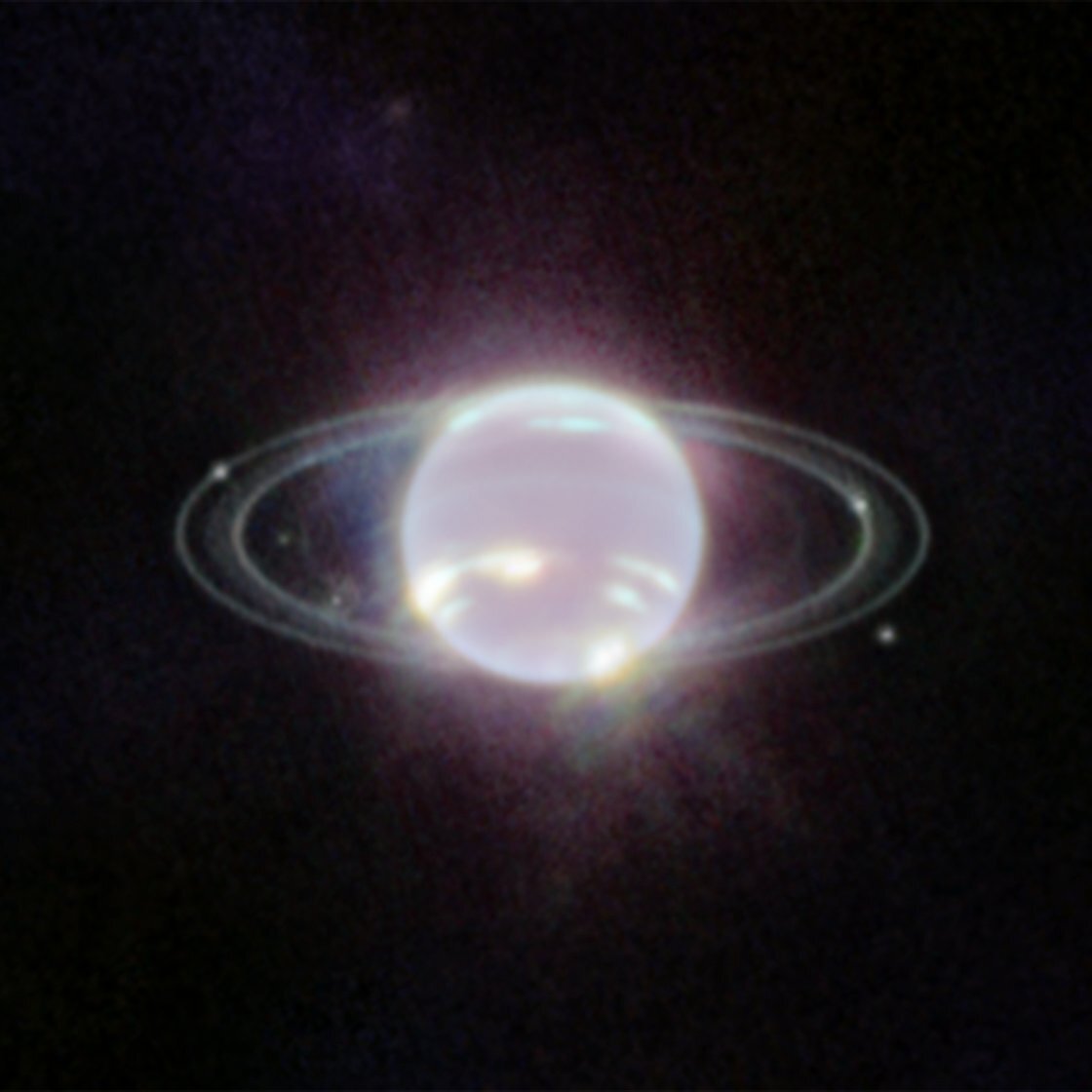
The James Webb Space Telescope has just returned a stunning picture of Neptune which is the clearest picture of Neptune’s rings in more than three decades.
Neptune has fascinated researchers since its discovery in 1846. Located 30 times farther from the Sun than Earth, Neptune orbits in the remote, dark region of the outer solar system. This planet is characterized as an ice giant due to the chemical make-up of its interior.
Webb’s Near-Infrared Camera (NIRCam) captures pictures of objects in the near-infrared range from 0.6 to 5 microns, so Neptune does not appear blue to Webb as compared to pictures from Hubble. Neptune’s methane gas absorbs red and infrared light making the planet appear quite dark at these near-infrared wavelengths. In fact, the lightness we see in the photo is Neptune’s methane ice clouds. Such methane-ice clouds are prominent as bright streaks and spots, which reflect sunlight before it is absorbed by methane gas.
Neptune’s 164-year orbit means its northern pole, at the top of this image, is just out of view for astronomers, but the Webb images hint at an intriguing brightness in that area. A previously known vortex at the southern pole is evident in Webb’s view too.
Webb also captured seven of Neptune’s 14 known moons. Dominating this Webb portrait of Neptune is a very bright point of light sporting the signature diffraction spikes seen in many of Webb’s images, but this is not a star. Rather, this is Neptune’s large and unusual moon, Triton.
Covered in a frozen sheen of condensed nitrogen, Triton reflects an average of 70 percent of the sunlight that hits it. It far outshines Neptune in this image because the planet’s atmosphere is darkened by methane absorption at these near-infrared wavelengths. Triton orbits Neptune in an unusual backward (retrograde) orbit, leading astronomers to speculate that this moon was originally a Kuiper belt object that was gravitationally captured by Neptune.








